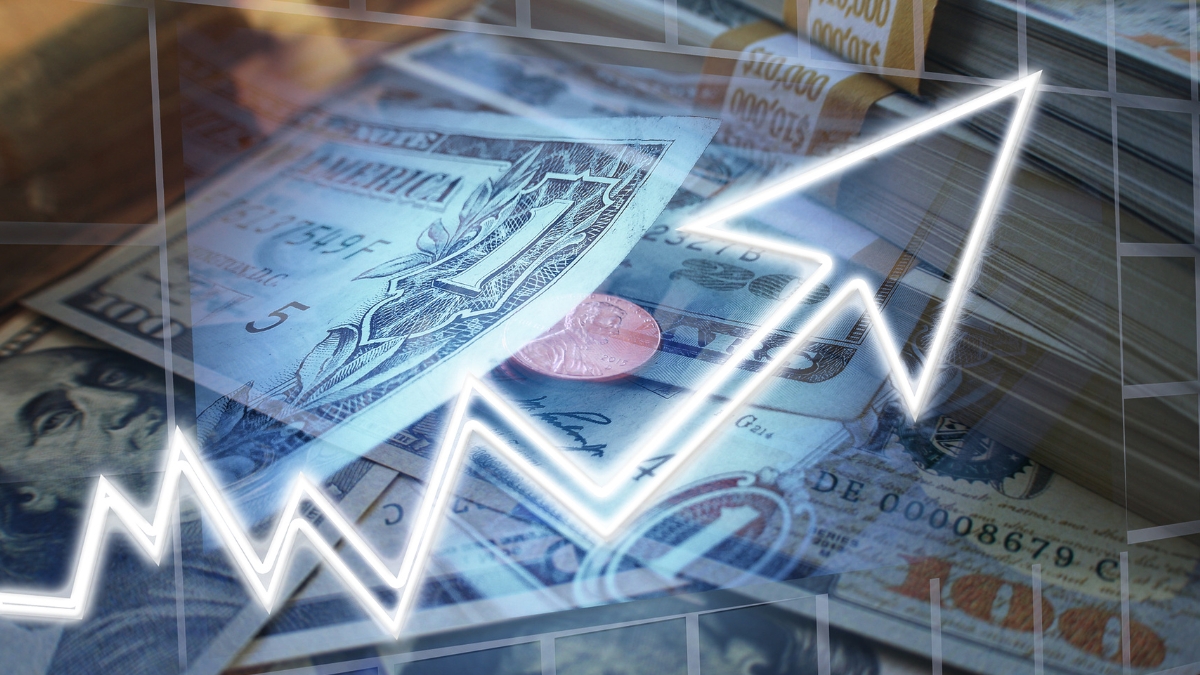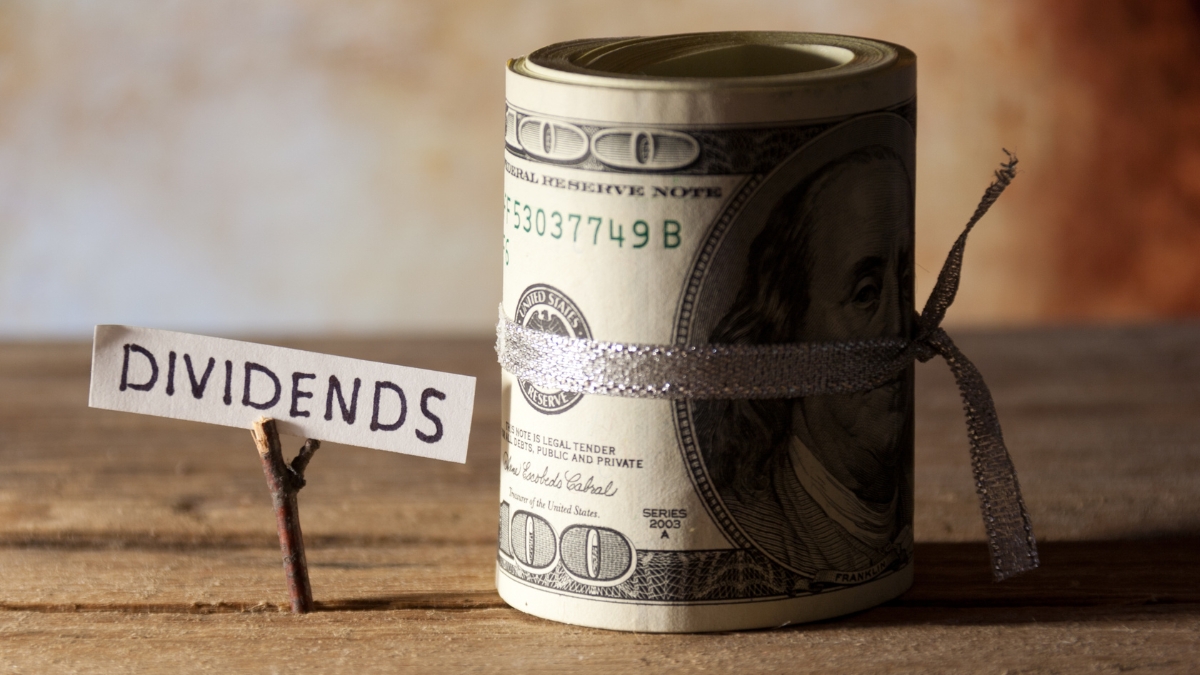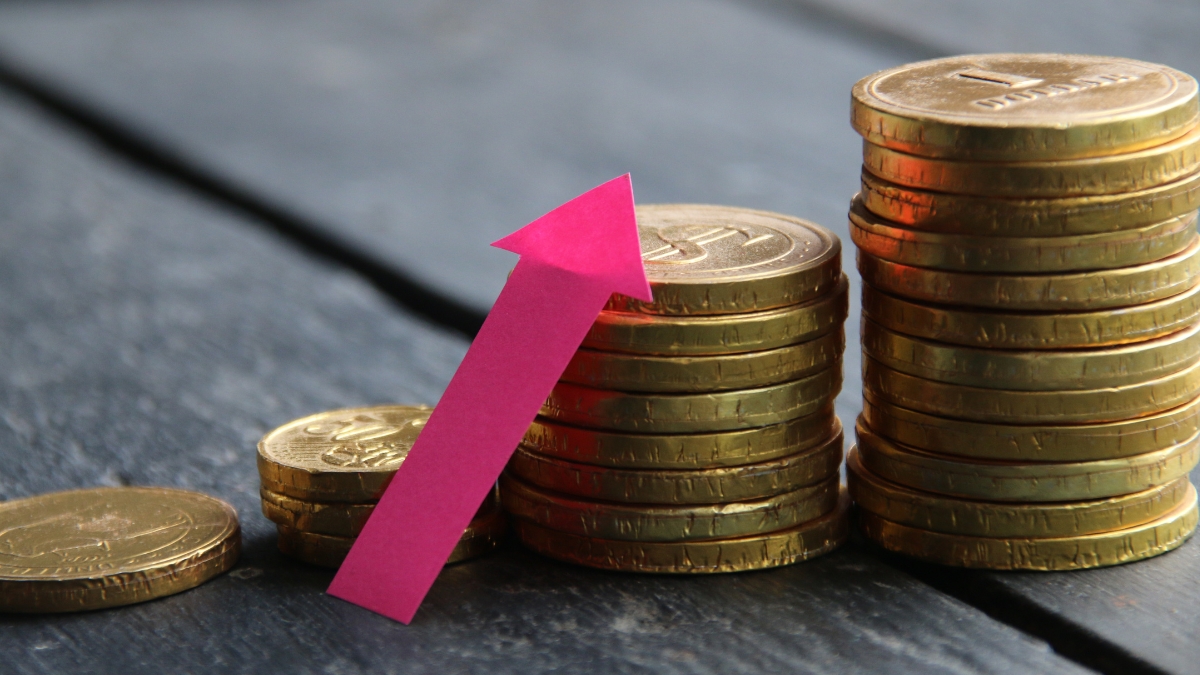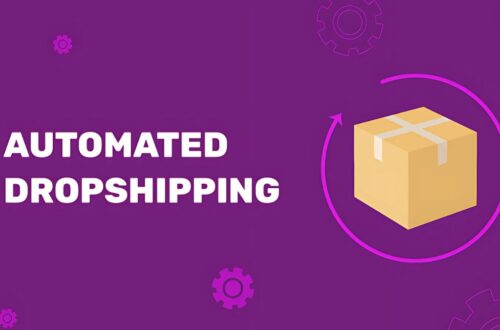
How to Start Dividend Investing: A Beginner’s Guide to Building Passive Income
Did you know that the S&P 500’s dividend aristocrats have outperformed the broader market by an average of 1.9% annually over the past 25 years? I remember when I first started investing in dividend stocks – it felt overwhelming! But today, dividend investing has become one of the most reliable ways to build passive income. Whether you’re planning for retirement or seeking to create multiple income streams, this guide will walk you through everything you need to know about getting started with dividend investing.
Understanding Dividend Investing Fundamentals
Let me share what I’ve learned about dividend investing fundamentals after years of building my own dividend portfolio. When I first started, I remember being completely overwhelmed by all the terminology. I mean, what exactly is a dividend yield, and why does everyone keep talking about payout ratios? Trust me, I’ve made plenty of mistakes along the way, but that’s exactly why I can help you avoid them!
First things first – let’s break down what dividends actually are. Think of them as your slice of the company’s profits. It’s like owning a tiny piece of a successful business that pays you just for being a partial owner. For example, if you own shares of Johnson & Johnson, they’ll send you a payment every quarter, like clockwork. How cool is that? I still remember getting my first dividend payment of $7.23 – it wasn’t much, but it felt amazing knowing my money was working for me!
Now, here’s something that took me way too long to figure out – not all dividends are created equal. You’ve got your regular dividends, which are like those reliable friends who always show up on time. These are typically paid quarterly by established companies. Then there are special dividends, which are like surprise bonus payments when a company has extra cash to share. And don’t get me started on preferred dividends – these are more like the VIP section of dividend investing, with guaranteed payments but less potential for growth.
Let’s talk about the numbers that really matter. The dividend yield is probably the first thing most people look at – it’s like the interest rate on your savings account. For instance, if a $100 stock pays $4 in annual dividends, that’s a 4% yield. But here’s the trap I fell into early on: chasing super high yields. I once bought a stock with a 12% yield, thinking I’d struck gold. Spoiler alert: the company cut its dividend three months later!

The payout ratio was my lifesaver in avoiding similar mistakes later. This tells you how much of a company’s earnings are being paid out as dividends. I learned to be cautious when it’s above 75% – it’s like someone spending three-quarters of their paycheck on rent. It might be manageable, but there’s not much room for unexpected expenses.
The real magic happens with dividend growth rates and reinvestment. This is where compound interest becomes your best friend. When I first started reinvesting my dividends (using what’s called a DRIP – Dividend Reinvestment Plan), I was earning about $100 per quarter. Five years later, those same initial investments were generating over $180 per quarter, thanks to both dividend increases and reinvestment. It’s like a snowball effect – each reinvested dividend buys more shares, which then generate more dividends.
One of my favorite ways to explain compound interest is the “rule of 72.” Take 72 divided by your annual return rate, and that’s roughly how many years it’ll take your money to double. With a 6% dividend yield and growth rate, your investment could double in about 12 years – without you adding another penny! That’s the power of patience and consistent dividend reinvestment.
Looking back, I wish someone had explained these fundamentals to me when I was starting out. The most important lesson I’ve learned? Focus on quality companies with sustainable payout ratios and consistent dividend growth rather than chasing the highest yields. It’s not about getting rich quick – it’s about building a reliable income stream that grows over time.
Remember, these fundamentals are just the foundation. Once you’ve got these down, you can start diving into more advanced strategies. But master these basics first – trust me, your future self will thank you!
Setting Up Your Dividend Investment Strategy
Let’s start with the most important question: what are you trying to achieve? I remember sitting down at my kitchen table one weekend and really thinking this through. For me, the goal was to generate $2,000 in monthly passive income for retirement. Your goal might be different – maybe you want to fund your kids’ college education or create a second income stream. Whatever it is, write it down! Having a specific number in mind changes everything about how you approach dividend investing.
Here’s a practical tip for calculating your starting point: take your desired annual dividend income and divide it by your target dividend yield. For example, if you want $24,000 in annual dividend income (that’s $2,000 monthly) and you’re targeting a 3% average yield, you’d need about $800,000 invested. Don’t let that number scare you! The beauty of dividend investing is that you can start small and build up over time.
Speaking of starting small, let me bust a common myth: you don’t need a fortune to begin. I started with just $500, investing in a dividend ETF that gave me exposure to multiple dividend-paying companies. The key is consistency. Even $100 a month invested in quality dividend stocks can grow into something substantial over time. I’ve found that setting up automatic transfers to my investment account on payday helps maintain discipline.
Now, here’s where things get interesting – choosing between dividend growth and high-yield strategies. This was a game-changer for me. After some costly mistakes chasing high yields (looking at you, 12% yield energy stock that cut its dividend!), I learned to appreciate dividend growth investing. Companies like Procter & Gamble might only yield 2.5%, but they’ve increased their dividend for over 60 years straight! That’s the kind of reliability you want in your portfolio.

But here’s the thing about diversification – it’s not just about buying different stocks. You need to think about sectors too. One strategy that’s worked well for me is the “bucket approach.” I divide my dividend portfolio into three buckets:
- Growth bucket: Lower yield (1-3%) but high dividend growth rate
- Core bucket: Medium yield (3-5%) with steady dividend growth
- High-yield bucket: Higher yield (5%+) but slower growth
I try to keep no more than 20% of my portfolio in any single sector. This saved me during the 2020 market crash when some sectors cut dividends while others maintained them. Energy and financial sectors can offer great yields, but they’re often more cyclical than consumer staples or utilities.
Time horizon is crucial too – and this is where I see a lot of people mess up. If you’re 30 years from retirement, you can focus more on dividend growth stocks. But if you’re closer to retirement, you might want to balance growth with current income. I keep a spreadsheet tracking my dividend income monthly, and it’s amazing to see how those small initial investments have grown over time.
One thing I’ve learned the hard way: don’t chase yield at the expense of quality. A sustainable 4% yield from a strong company is way better than an 8% yield that’s at risk of being cut. I now use a checklist before buying any dividend stock:
- Does it have at least 5 years of dividend growth?
- Is the payout ratio below 75%?
- How does its debt level compare to industry peers?
- What’s the company’s competitive advantage?
How to Choose Quality Dividend Stocks
Let me share what I’ve learned about picking quality dividend stocks after spending years refining my selection process. I still remember my first attempt at analyzing a dividend stock – I was so focused on the yield that I completely missed the red flags in the company’s financial statements. Talk about a learning experience!
Here’s what took me way too long to figure out: choosing dividend stocks is a lot like buying a house. You wouldn’t buy a house just because it has a nice front door, right? Similarly, you can’t pick dividend stocks based on yield alone. I learned this the hard way when one of my “high-yield bargains” turned out to be more like a money pit!
Let’s start with my favorite group of dividend stocks – the Dividend Aristocrats. These are companies that have increased their dividends for at least 25 consecutive years. Even more impressive are the Dividend Kings, with 50+ years of dividend increases. Think about that – these companies kept raising dividends through recessions, market crashes, and even global pandemics! Companies like Johnson & Johnson, Procter & Gamble, and Coca-Cola have proven they can weather any storm.
When it comes to analyzing financials, I’ve developed what I call my “sleep well at night” checklist. First up is the payout ratio – this was a game-changer for me. A company earning $2 per share and paying $1.50 in dividends (75% payout ratio) is like someone spending three-quarters of their paycheck on rent – they’re stretched thin! I now prefer companies with payout ratios below 60% for most industries, though utilities can sustainably run higher.
Free cash flow is another crucial metric I watch. You know how you need cash in your checking account to pay bills? Companies need free cash flow to pay dividends. I once ignored this and invested in a company with negative free cash flow because the yield was attractive. Guess what happened? Dividend cut six months later. Now I always check if the company’s free cash flow comfortably covers the dividend payments.
Here’s a specific tip that’s served me well: look at how companies handled their dividends during the 2008 financial crisis and the 2020 pandemic. These were stress tests that revealed which companies truly prioritize their dividends. I maintain a spreadsheet tracking this history for potential investments – it’s amazing how much you can learn from a company’s past behavior.

Industry trends matter more than I initially realized. For example, I was heavily invested in retail REITs until I noticed the growing trend of online shopping. Now I ask myself: “Will this company’s competitive advantage still exist in 10 years?” Take Microsoft – they’ve built such strong competitive advantages through their cloud services and software ecosystem that their dividend looks safer than ever.
One of my best moves was creating a dividend stock scoring system. Each potential investment gets points for:
- Years of dividend growth (1 point per year up to 25)
- Payout ratio under 60% (10 points)
- Debt-to-EBITDA ratio below industry average (5 points)
- Return on equity above 15% (5 points)
- Free cash flow coverage above 1.5x (10 points)
I only consider stocks that score at least 40 out of 55 points. This system has helped me avoid several potential dividend cuts and identify strong performers early. It might seem like overkill, but dividend investing is all about preserving and growing your income stream.
Here’s something that surprised me: some of the best dividend stocks aren’t necessarily the highest yielders in their sector. Companies that retain more earnings can reinvest in their business, potentially leading to stronger dividend growth long-term. I’ve learned to look for that sweet spot between current yield and growth potential.
Remember, quality dividend stocks are like good tenants – they pay regularly, increase their payments over time, and don’t give you stress. Take your time with the analysis, because one quality dividend stock is worth more than ten questionable ones. Trust me, your future self will thank you for doing the homework now!
Getting Started with Your First Dividend Investment
First, let’s talk about choosing the right account type – this is something I wish someone had explained to me early on. If you’re investing for retirement, a Roth IRA can be amazing for dividend investing. Why? Because those dividends grow tax-free! I started with a regular taxable account and kicked myself later when I learned about the tax advantages I was missing. For example, if you’re earning $1,000 in annual dividends, in a taxable account you might owe $150 or more in taxes, while in a Roth IRA, that’s all yours to keep and reinvest!
Opening a brokerage account is actually way easier than I initially thought. It’s mostly like setting up any online account, but with a few extra verification steps. Here’s what you’ll need:
- Social Security number
- Valid ID (driver’s license or passport)
- Bank account information for funding
- Basic personal information (address, employment, etc.)
The whole process usually takes about 15-20 minutes. I remember being nervous about choosing the “right” broker, but honestly, most major brokers like Fidelity, Charles Schwab, or TD Ameritrade are great options. They all offer commission-free stock trades now, which is fantastic! When I started, I was paying $7.95 per trade – that really ate into my initial investments.
Now, here’s something cool about placing your first trade: most brokers make it super simple. I use what’s called a “market order” for my dividend stock purchases. Quick tip: always check the current price and volume before placing your order. I once placed a market order without checking the trading volume and got a pretty surprising price – lesson learned! It’s often better to use a “limit order” to specify the maximum price you’re willing to pay.
Setting up dividend reinvestment (DRIP) was a total game-changer for me. Most brokers have a simple checkbox option to automatically reinvest dividends. I’ll never forget watching my first reinvested dividend buy 0.37 shares of stock – it wasn’t much, but it felt like my money was finally working for me! One thing to note: some brokers let you set up DRIP for your entire account, while others require you to set it up for each position individually.

Here’s my step-by-step process for making that first dividend investment:
- Fund your account (I started with $500)
- Research and select your first dividend stock (I began with a dividend ETF like SCHD for diversification)
- Check the current market price and recent trading range
- Place a limit order slightly above the current ask price
- Once filled, immediately set up DRIP for that position
Pro tip: Start with either a solid dividend ETF or a well-known Dividend Aristocrat for your first purchase. I started with individual stocks and quickly realized I needed more diversification. An ETF like SCHD or VIG would have been a much smarter first move.
Something nobody told me: keep track of your cost basis from day one! I created a simple spreadsheet to track:
- Purchase price and date
- Number of shares
- Dividend amount and dates
- Reinvested dividends
- Total return
One mistake I made was not having enough cash set aside before starting. Make sure you have an emergency fund before diving into dividend investing. I had to sell some stocks early on when unexpected expenses came up, and that’s definitely not ideal for a long-term dividend strategy.
Remember, your first dividend investment doesn’t have to be perfect. The important thing is to start and learn as you go. I’ve found that the best way to learn is by doing – just start small, reinvest those dividends, and watch your passive income stream grow over time. The excitement of receiving that first dividend payment? It never gets old!
Building and Managing Your Dividend Portfolio
You know what’s funny? I used to check my dividend stocks obsessively – like, multiple times a day! Now I know better. Portfolio management is more like tending a garden than day trading. These days, I have a monthly review system that keeps me informed without driving me crazy. I track key metrics in a simple spreadsheet: dividend growth rates, payout ratios, and earnings coverage. You’d be surprised how many problems you can spot early just by watching these numbers!
Let’s talk about portfolio allocation – this is crucial. I learned the hard way not to put all my eggs in one basket. Here’s my current strategy: I aim for no more than 5% in any single stock and no more than 20% in any sector. Real example: during the 2020 pandemic, my energy sector holdings took a hit, but my consumer staples and healthcare stocks kept those dividend payments flowing. That diversification saved my income stream!
Dollar-cost averaging has been my secret weapon. Instead of trying to time the market (which I failed at miserably in my early days), I now invest a fixed amount every month. For instance, if I have $1,000 to invest monthly, I might split it between 2-3 positions that look undervalued or need rebalancing. This approach has helped me avoid the stress of market timing and actually improved my overall returns.
Here’s something nobody talks about enough – what to do when a company cuts its dividend. It happened to me with a retail REIT in 2020, and I’ve developed a three-step response plan:
- Assess the reason for the cut (temporary or structural?)
- Evaluate the new dividend sustainability
- Decide whether to hold, add more, or sell based on the company’s future prospects
One of my best moves was setting up what I call “dividend health alerts.” I monitor:
- Payout ratio trends (warning if it exceeds 75%)
- Free cash flow coverage (should be >1.2x)
- Debt levels (especially when interest rates change)
- Earnings growth rates
- Industry disruption risks

The most valuable lesson I’ve learned? Be proactive, not reactive. When I notice a company’s fundamentals deteriorating, I don’t wait for the dividend cut announcement. I’ll start scaling out of the position and reallocating to stronger dividend payers. This has saved me from several major dividend cuts over the years.
Speaking of portfolio management, rebalancing is key. Every quarter, I review my allocations and adjust if needed. But here’s the trick – I don’t automatically sell if a position grows beyond my target allocation. Sometimes that growth is justified! Instead, I direct new investments toward underweight positions to naturally rebalance over time.
Reinvesting dividends strategically has become a powerful tool in my portfolio. While I have DRIP set up for most positions, I sometimes collect dividends as cash to reinvest in better opportunities. For example, when a solid dividend stock goes through a temporary price dip, having some dividend cash available lets me take advantage of these opportunities.
Remember that merger I mentioned? Companies change over time, and your portfolio needs to adapt. When one of my holdings was acquired, I had to evaluate the new company’s dividend policy and decide whether it still fit my strategy. Sometimes the best move is to take profits and reinvest in another quality dividend payer.
Here’s my current monitoring schedule:
- Daily: Quick check for major news
- Weekly: Review any dividend announcements
- Monthly: Deep dive into portfolio allocation
- Quarterly: Full portfolio rebalancing assessment
- Annually: Strategic review of all holdings
Managing a dividend portfolio is like conducting an orchestra – every section needs attention, but not all at once. Take your time, stay consistent with your strategy, and don’t let short-term market noise shake you out of quality positions. Trust me, a well-managed dividend portfolio can provide reliable income for years to come!
Advanced Dividend Investing Strategies
Let’s dive into dividend ETFs first – they’ve become a cornerstone of my portfolio. I remember being skeptical about ETFs initially, thinking individual stocks were the only way to go. Then I discovered SCHD (Schwab’s U.S. Dividend Equity ETF), and it opened my eyes to the power of diversification. The beauty of ETFs like SCHD, VIG, or VYM is that they do the heavy lifting for you. They screen for quality metrics and rebalance automatically. For example, when I look at SCHD’s performance over the past decade, it’s not just the dividend yield that’s impressive – it’s the consistent dividend growth combined with capital appreciation.
International dividend investing was a game-changer for me. I used to be stuck in what they call “home country bias,” only investing in U.S. stocks. But here’s what I discovered: many international companies, especially in Europe, have been paying dividends for over a century! Take companies like Unilever or Roche – they often offer higher yields than their U.S. counterparts. However, watch out for foreign tax withholding! I learned this the hard way when 15% of my Swiss dividend payment was withheld for taxes.
Tax optimization is probably the most underrated aspect of dividend investing. I’ve developed what I call a “tax-smart” allocation strategy:
- High-yield stocks go in my IRA to shelter those frequent payments
- Growth-focused dividend stocks stay in my taxable account for potential qualified dividend treatment
- REITs and high-turnover dividend funds belong in tax-advantaged accounts
Speaking of scaling, here’s something that revolutionized my approach: using options to enhance dividend income. I sometimes sell covered calls on my dividend positions during low-volatility periods. For instance, if I own 100 shares of a stable dividend payer trading at $50, I might sell a covered call $5 above the current price. This generates extra income while still allowing me to collect dividends. Just be careful not to get called away right before the ex-dividend date!
One advanced strategy that’s worked well for me is dividend capture. This involves buying stocks just before the ex-dividend date and selling shortly after. However, I’ll be honest – this requires careful timing and consideration of trading costs. I only use this strategy with highly liquid stocks and when the potential return justifies the effort.

Here’s a more sophisticated portfolio scaling technique I’ve developed:
- Tier 1: Core holdings (40-50%) in dividend aristocrats and quality ETFs
- Tier 2: Growth dividend stocks (30-35%) focusing on dividend growth rate
- Tier 3: High-yield opportunities (15-20%) carefully selected for sustainability
- Tier 4: Speculation portion (5-10%) for special situations and turnarounds
The most valuable lesson I’ve learned about scaling? It’s not just about adding more money – it’s about optimizing what you already have. I review my portfolio’s yield on cost every quarter. Positions that haven’t grown their dividends as expected get placed on a watchlist for potential replacement.
One thing I wish I’d known earlier: the power of sector rotation in dividend investing. Different sectors perform better at different points in the economic cycle. For instance, consumer staples tend to maintain dividends during recessions, while financials often increase dividends during economic expansions. I now adjust my sector weightings based on where we are in the economic cycle.
Remember, these advanced strategies aren’t for everyone. Start with the basics and gradually incorporate these techniques as you gain experience. I made plenty of mistakes along the way, but each one taught me something valuable. The key is to keep learning and adapting your strategy as markets change and your knowledge grows!
Starting your dividend investing journey doesn’t have to be complicated. By focusing on quality companies, maintaining a long-term perspective, and consistently reinvesting your dividends, you can build a robust passive income stream. Remember, the key to successful dividend investing lies in patience and disciplined execution. Ready to take the first step? Start by opening your investment account and selecting your first dividend stock using the strategies we’ve covered.





